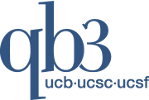Antigen immunoprecipitation from spiked cell lysates by flow cytometry
1.0 Introduction / Description
Techniques involving immunoprecipitation (IP) are widely used in biomedical sciences. These include IP for protein interaction analysis such as IP-mass spectroscopy and chromatin IP (ChIP) methods for characterizing transcriptional regulation and epigenomics. Thus, we have made a particular effort in developing a method for identifying IP-positive antibodies. Whereas antibodies for IP have been conventionally validated using Western blotting, dot blotting, protein microarray and/or immunofluorescence, recent studies show that antibodies that are "passing" by these validation techniques often fail in IP experiments (1). A reason may be that conditions in which antibodies are used in IP are very different from those for the other methods: in IP, an antibody needs to efficiently capture an antigen, typically at a low concentration, in cell lysates. In Western blot, microarray and immunofluorescence, an antigen is separated, often concentrated and immobilized on solid support, which is detected with an antibody in a defined buffer. Consequently, distinct antibody properties are required to produce "passing" results for these two distinct types of procedures. In particular, antibody specificity and affinity are both critical factors in successful IP especially for capturing a low-abundance antigen from cell lysates. It should be noted that Western blot, microarray or immunofluorescence cannot directly assess antibody affinity.
We have recently developed an IP-based validation method that uses the same antibody–antigen orientation as in actual IP applications (2). We utilize flow cytometry that provide high sensitivity and high reproducibility. It revealed a very wide range of antibody affinities among commercial "ChIP-grade" antibodies to histone posttranslational modifications, which may explain why many of them fail in actual ChIP experiments. Furthermore, results from our IP assay substantially differed from those from peptide microarrays: microarrays gave false negative results (i.e. apparent cross-reactivity) for high-affinity antibodies and false positive results (i.e. apparent high specificity) for low-affinity antibodies. Although effective, a limitation of our IP method was that it required a series of closely related, purified antigens for assessing specificity. The "spiked IP" method examines whether or not an antibody of interest efficiently binds its cognate antigen, the same antigen used for antibody generation, in concentrated human cell lysates, instead of assessing specificity using a series of closely related antigens, making the IP validation more broadly applicable (3). Importantly, the use of high-concentration cell lysates in the assay does not interfere flow cytometry detection, and the assay is compatible with common solution conditions used in IP applications. Our current spike IP consists of two steps: (i) test IP efficiency with and without cell lysates with a single antigen concentration; (ii) optionally perform antigen titration for determining the dissociation constant (KD). The assay can be performed in two orientations: immobilized antibody or immobilized antigen. The protocol shown below is for the assay with an immobilized antibody, i.e. the format of actual IP. A high-specificity antibody should bind to its cognate antigen in cell lysates as well as in buffer. A reduction in binding signal by cell lysates indicate cross reactivity of the antibody with molecules in the lysates. This assay tests cross-reactivity with diverse types of molecules in cell lysates including proteins, nucleic acids, lipids and small molecules.
2.0 Overview steps
- 2.1 Dilute stock bead suspension
- 2.2 Aliquot diluted beads for test and controls
- 2.3 Add biotinylated recombinant antibody (rAB) to beads in control buffer and lysate and incubate
- 2.4 Transfer bead:rAB complex to a filter plate
- 2.5 Add 50 nM diluted antigen to filter plate containing bead:rAB complex and incubate
- 2.6 Wash beads in filter plate repeatedly
- 2.7 Add fluorescently-labeled streptavidin conjugate to beads and incubate
- 2.8 Wash beads in filter plate repeatedly
- 2.9 Resuspend beads in buffer for analysis
- 3.0 Analyze bead-bound rAB by flow cytometry
3.0 Materials
Glassware/Plasticware
- 96-well filter plate (MultiScreenHTS HV, 0.45μm pore size; Millipore)
Reagents
- Streptavidin-coated polystyrene beads (stock concentration is 6x105 beads/μl)
- (Bangs Lab Inc – CM01N)
- Streptavidin conjugated Phycoerythrin (Thermo)
Solutions
- High salt AFC buffer: 10 mM Tris-HCl, pH 7.9, 420 mM NaCl, 0.1% NP-40
- PBS/BSA: 20 mM Na2HPO4, pH 7.5, 150 mM NaCl, 0.1% BSA
- PBST/BSA: PBS/BSA + 0.1% Tween-20
4.0 Preparation of negative control beads
- 4.1 Dilute stock beads to 3 x103 beads / μl (1/200 dilution)
- 4.2 Resuspend diluted beads very well by vortexing.
- 4.3 You will need 10μl of diluted beads (3 x103 beads / μl) per well, or 30 μL per antigen (measured in triplicate)
- 4.4 Aliquot appropriate amount of diluted beads into a new microfuge tube. Spin down briefly in refrigerated centrifuge: 9000 x g, 2 min, 4°C. Remove from centrifuge and discard the supernatant. Resuspend in PBST/BSA using the same volume as before.
- 4.5 For each antigen being tested, mix 30 μL of diluted beads with 3 μL of 50 μM biotin. Incubate for 15 min at 4°C with rotation.
- 4.6 For each antigen being tested, transfer 10μl of beads-biotin mixture into three wells on filter plate then vacuum.
- 4.7 Wash filter plate 3x with 200 μL of ice-cold PBST/BSA.
5.0 Preparation of rAB-coated beads
- 5.1 Dilute stock beads to 3 x103 beads/μl (1/200 dilution)
- 5.2 Resuspend diluted beads very well by vortexing.
- 5.3 You will need 10μL of diluted beads (3 x103 beads/μl) per well, or 60 μL per antibody: 30 μL for triplicate positive binding measurements in buffer, 30 μL for triplicate positive binding measurements in lysate.
- 5.4 Aliquot appropriate amount of diluted beads into a new microfuge tube. Spin down briefly in refrigerated centrifuge: 9k x g, 2 min, 4°C. Remove from centrifuge and discard the supernatant Resuspend in PBST/BSA using the same volume as before.
- 5.5 For each rAB being tested, mix 60 μL of diluted beads with 60 μL of 10 nM rAB. Incubate for 30 min at 4°C with rotation.
- 5.6 Add 12 μL of 50 μM biotin for each rAB-bead mixture so as to block remaining biotin-binding sites of the streptavidin beads.
- 5.7 Incubate for 15 min at 4°C with rotation.
- 5.8 Transfer 20 μL of beads-rAB-biotin mixture into six wells on filter plate then vacuum. This should be done in parallel with step 4.6.
- 5.9 Wash filter plate 3x with 200 μL of ice-cold PBST/BSA.
- 5.10 Remove solution by vacuum and proceed to target incubation.
6.0 Antigen Incubation
- 6.1 Prepare 120 µL of 50 nM biotinylated antigen in buffer and 60 µL of 50 nM antigen in 3 OD HEK293 lysate.
- 6.2 Dispense 20 µL of antigen in buffer into three of the filter plate wells with the corresponding rAB coated beads and 20 µl of antigen in lysate into rest of the filter plate wells with the corresponding rAB beads.
- 6.3 Dispense 20 µL of antigen in buffer to into three of the filter plate wells with negative control beads.
- 6.4 Incubate for 30 minutes at 4°C with shaking.
7.0 Staining
- 7.1 Add 20 uL of 1/100 SAV-PE (Thermo) in PBS/BSA to beads.
- 7.2 Incubate sample for 30 min at 4°C on plate shaker.
- 7.3 Wash filter plate 3x with 200 μL of ice-cold PBST/BSA.
8.0 Flow Cytometry Measurements
- 8.1 Resuspend beads in 100 μL of PBST/BSA.
- 8.2 Measure with Intellicyt. 10 s sip time, FL2 height. (this step depends on the instrument to be used).
NOTE - For titration, experiments are performed with a range of antigen concentration.
Please send corrections, modifications and suggestions to smiersch@recombinant-antibodies.org



